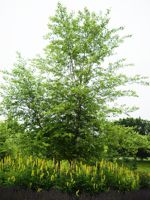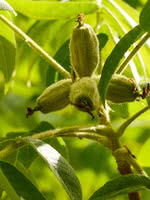Mon-Fri 9am - 5pm Mountain time
River Birch vs Butternut (White Walnut)
Betula nigra
Juglans cinerea
NOT AVAILABLE THIS SEASON - MIGHT RETURN
River Birch has beautiful, peeling, brown bark that reveals camel-colored and pink beneath. It is more borer resistant than white bark birches, which makes it a much longer-lived landscape tree.
Butternut is one of the few walnut varieties native to Canada. The nuts are sought after for their mild, sweet, and oily taste. Ensure this tree is planted in full sun and well-drained soil for best results.
Butternut is self-fertile but it has better yields when planted near other butternuts. It can survive in zone 2, but reliably produces nuts in zone 3.
A top CO2 absorbing species. Experts think this tree may help climate change more than others.

